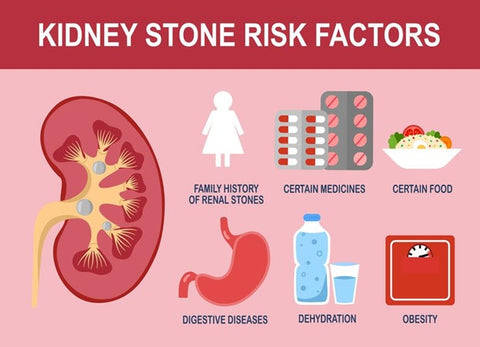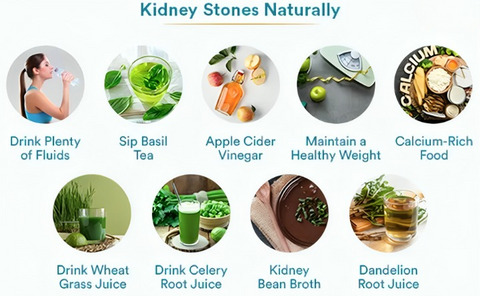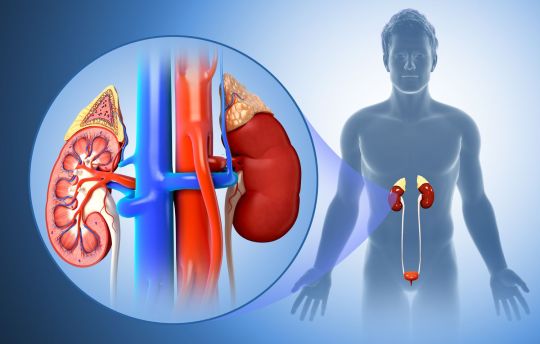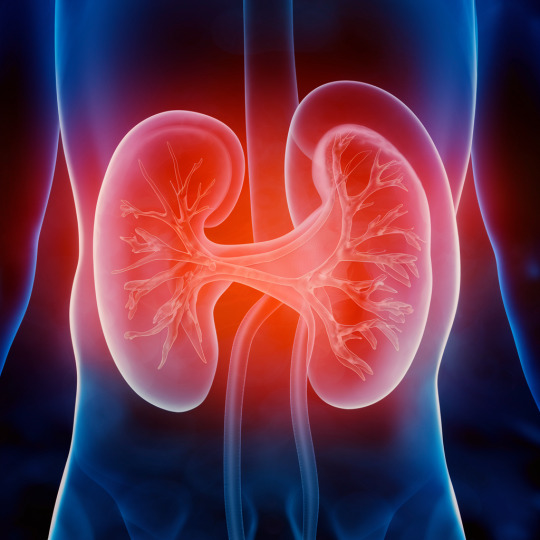Text
0 notes
Text
Now Discover the Best Kidney Stone Removal
Introduction
Kidney stones are solid deposits of minerals and salts that form inside the kidneys. They can cause severe pain and discomfort, especially when they move through the urinary tract. While small stones may pass on their own, larger stones often require medical intervention. This article explores various methods for kidney stone removal, providing detailed information on each approach to help you understand your options.

Understanding Kidney Stones
Kidney stones develop when minerals in urine crystallize and form hard deposits. Factors such as dehydration, diet, obesity, and certain medical conditions can increase the risk of developing kidney stones. Symptoms include intense pain in the back or side, blood in the urine, nausea, and frequent urination.
Types of Kidney Stones
Calcium Stones: The most common type, often formed from calcium oxalate or calcium phosphate.
Uric Acid Stones: Formed in people who do not drink enough fluids or who eat a high-protein diet.
Struvite Stones: Often related to urinary tract infections.
Cystine Stones: Rare and usually hereditary, formed due to the body excreting too much cystine.
Non-Surgical Treatments for Kidney Stones
1. Increased Hydration
Drinking plenty of water helps flush out the urinary system, which can aid in the passage of small kidney stones. Aim for at least 2-3 liters of water per day.
2. Medications
Certain medications can help manage pain and facilitate the passage of stones:
Pain Relievers: Over-the-counter pain relievers like ibuprofen, acetaminophen, and naproxen can help alleviate discomfort.
Alpha Blockers: These medications relax the muscles in the ureter, helping stones pass more easily.
3. Extracorporeal Shock Wave Lithotripsy (ESWL)
ESWL uses sound waves to break kidney stones into smaller pieces, making them easier to pass through the urinary tract. This non-invasive procedure is effective for stones less than 2 cm in diameter.
Procedure:
The patient lies on a water-filled cushion.
High-energy sound waves are directed at the kidney stone.
The stone is fragmented into smaller pieces that can be passed naturally.
4. Ureteroscopy
A ureteroscopy involves inserting a thin, flexible tube with a camera (ureteroscope) through the urethra and bladder into the ureter. This procedure allows the doctor to see and remove the stone or break it into smaller pieces using laser energy.
Procedure:
The patient is given anesthesia.
The ureteroscope is inserted through the urinary tract to locate the stone.
Laser or other tools are used to break the stone into fragments for removal or natural passage.
Surgical Treatments for Kidney Stones
1. Percutaneous Nephrolithotomy (PCNL)
PCNL is a minimally invasive surgery used for large or irregularly shaped kidney stones. It involves making a small incision in the back to access and remove the stones.
Procedure:
The patient is given general anesthesia.
A small incision is made in the back to insert a nephroscope.
Ultrasound or laser is used to break the stone into smaller pieces, which are then removed.
2. Open Surgery
Open surgery is rarely needed and is reserved for very large or complex stones that cannot be treated with other methods. It involves a larger incision to directly access and remove the kidney stone.
Procedure:
The patient is given general anesthesia.
An incision is made in the side or abdomen to access the kidney.
The stone is located and removed, and the incision is closed.
Prevention of Kidney Stones
1. Stay Hydrated
Drinking plenty of fluids, particularly water, is the most effective way to prevent kidney stones. Aim for at least 2-3 liters of water daily.
2. Dietary Modifications
Certain dietary changes can reduce the risk of kidney stones:
Limit Salt Intake: High salt levels can increase calcium in the urine, leading to stone formation.
Reduce Oxalate-Rich Foods: Spinach, nuts, and chocolate are high in oxalates, which can contribute to kidney stones.
Moderate Protein Intake: Too much protein, especially from animal sources, can increase the risk of uric acid stones.
3. Maintain a Healthy Weight
Obesity is a risk factor for kidney stones. Maintaining a healthy weight through diet and exercise can help reduce this risk.
4. Medications
For those with recurrent kidney stones, doctors may prescribe medications to prevent stone formation. These can include:
Thiazide Diuretics: Reduce calcium in the urine.
Allopurinol: Lowers uric acid levels in the blood and urine.
Potassium Citrate: Helps prevent the formation of calcium and uric acid stones.
When to Seek Medical Help
If you experience severe pain, blood in the urine, fever, chills, or difficulty passing urine, seek medical attention immediately. These symptoms could indicate a kidney stone or another serious condition that requires prompt treatment.
Conclusion
Kidney stones can cause significant discomfort, but various treatment options are available to alleviate pain and remove the stones. From non-invasive methods like increased hydration and medications to surgical procedures for larger stones, there are effective solutions for all types and sizes of kidney stones. Preventive measures, such as staying hydrated, dietary modifications, and maintaining a healthy weight, can help reduce the risk of developing kidney stones in the future. Consult with a healthcare professional to determine the best course of action based on your specific situation.
0 notes
Text
Best Homeopathy Medicines to Soothe Your Cough
Coughing is a common reflex action that clears the throat of mucus or foreign irritants. While coughing is often associated with colds, it can also result from allergies, infections, or other respiratory conditions. Homeopathy offers a natural and holistic approach to treating coughs, emphasizing personalized remedies based on individual symptoms. In this article, we explore the best homeopathic medicines for cough, providing a detailed guide to help you find relief.
Understanding Cough Types and Homeopathic Treatment
Before delving into specific homeopathic remedies, it's crucial to understand the different types of coughs. Each type requires a unique approach for effective treatment.

1. Dry Cough
A dry cough, also known as a non-productive cough, does not produce mucus. It often results from irritation or inflammation in the throat or airways.
Key Homeopathic Remedies for Dry Cough:
Bryonia Alba: This remedy is beneficial for dry, hacking coughs that cause chest pain. Patients often feel worse with movement and better with rest.
Phosphorus: Ideal for dry coughs accompanied by a burning sensation in the chest. It is also helpful for coughs that worsen with talking or laughing.
Spongia Tosta: Recommended for dry, barking coughs that sound like a saw being driven through wood. Symptoms often worsen at night.
2. Wet Cough
A wet cough, or productive cough, brings up mucus or phlegm. It is often associated with infections like bronchitis or pneumonia.
Key Homeopathic Remedies for Wet Cough:
Antimonium Tart: This remedy is effective for coughs with excessive mucus, where the patient has difficulty expectorating. The chest feels heavy, and the cough may cause vomiting.
Hepar Sulphuris: Best for wet coughs with yellow or green mucus, indicating a possible bacterial infection. The patient is usually very sensitive to cold.
Pulsatilla: Suitable for coughs with thick, bland mucus that is easily expectorated. Symptoms often worsen in warm rooms and improve in fresh air.
3. Spasmodic Cough
Spasmodic coughs are characterized by sudden, uncontrollable bursts of coughing, often seen in conditions like whooping cough.
Key Homeopathic Remedies for Spasmodic Cough:
Drosera: This remedy is highly effective for violent coughing fits that lead to gagging or vomiting. The cough is typically worse at night.
Cuprum Metallicum: Useful for spasmodic coughs that come in violent fits, accompanied by difficulty breathing.
Coccus Cacti: Ideal for spasmodic coughs with thick, ropy mucus. The cough is often triggered by changes in temperature.
Detailed Guide to Top Homeopathic Medicines for Cough
Bryonia Alba
Bryonia Alba is one of the most widely used homeopathic remedies for dry cough. It is derived from the root of the white bryony plant and is known for its effectiveness in treating coughs that are dry, hard, and painful. The patient may experience sharp chest pain, which worsens with movement and deep breathing.
Key Symptoms Addressed:
Dry, hacking cough
Chest pain aggravated by movement
Sensation of dryness in the respiratory tract
Dosage and Administration:
Bryonia Alba is typically administered in 30C potency, three times a day, until symptoms improve. However, it is always recommended to consult a homeopathic practitioner for personalized dosage.
Antimonium Tart
Antimonium Tart is particularly effective for treating wet coughs with rattling mucus in the chest. This remedy helps patients who have difficulty expelling the mucus, often leading to shortness of breath and a sense of suffocation.
Key Symptoms Addressed:
Rattling cough with thick mucus
Difficulty in expectorating phlegm
Weakness and fatigue accompanying the cough
Dosage and Administration:
Antimonium Tart is usually prescribed in 6C or 30C potency, taken two to three times daily. The exact dosage should be tailored to the individual's condition and response to the remedy.
Drosera
Drosera is a powerful homeopathic remedy for spasmodic coughs, especially those that come in violent fits. It is derived from the sundew plant and is particularly useful for treating whooping cough and other similar conditions.
Key Symptoms Addressed:
Violent coughing fits leading to gagging or vomiting
Cough worsens at night and after lying down
Sensation of a tickle in the throat
Dosage and Administration:
Drosera is often used in 30C potency, administered three times a day. For severe cases, higher potencies may be recommended under the guidance of a homeopathic professional.
Phosphorus
Phosphorus is an excellent remedy for dry, tickling coughs that are aggravated by talking, laughing, or exposure to cold air. This remedy is also useful for patients who experience a burning sensation in the chest along with their cough.
Key Symptoms Addressed:
Dry, tickling cough
Burning sensation in the chest
Cough worsens with talking or laughing
Dosage and Administration:
Phosphorus is commonly prescribed in 30C potency, taken three times daily. As always, consultation with a homeopathic practitioner is advised for proper dosing.
Pulsatilla
Pulsatilla is ideal for wet coughs with thick, bland mucus that is easily expectorated. This remedy is often indicated for coughs that worsen in warm rooms and improve in open air.
Key Symptoms Addressed:
Wet cough with thick, bland mucus
Cough worsens in warm rooms
Relief in open air
Dosage and Administration:
Pulsatilla is typically used in 30C potency, administered two to three times a day. Dosage may vary based on the severity of symptoms and individual response.
Additional Tips for Managing Cough with Homeopathy
1. Maintain Hydration
Keeping the body well-hydrated helps thin mucus, making it easier to expel. Drink plenty of water, herbal teas, and clear broths.
2. Rest and Recovery
Adequate rest is essential for the body to heal. Ensure a comfortable sleeping environment and avoid activities that strain the respiratory system.
3. Humidify the Air
Using a humidifier can add moisture to the air, which helps soothe irritated airways and ease coughing.
4. Avoid Irritants
Stay away from smoke, dust, and other environmental irritants that can exacerbate coughing.
5. Consult a Homeopathic Practitioner
While homeopathic remedies can be effective for cough, it is crucial to consult a professional for an accurate diagnosis and personalized treatment plan.
Conclusion
Homeopathy offers a range of effective remedies for different types of coughs, addressing the root cause and individual symptoms. By understanding the specific nature of your cough and choosing the appropriate remedy, you can find relief and support your body's natural healing process. Always remember to consult with a qualified homeopathic practitioner to ensure the best results.
0 notes
Text
Kidney Stone Removal: An Overview
Kidney stones are hard deposits made of minerals and salts that form inside your kidneys. They can cause significant pain and discomfort when they move through the urinary tract. Fortunately, there are various methods available for removing kidney stones. Here’s an overview of the common procedures:

1. Medications and Hydration
Small Stones: If the kidney stone is small (less than 5mm), it may pass on its own with adequate hydration. Doctors often recommend drinking lots of water (up to 2-3 liters a day).
Medications: Pain relievers like ibuprofen or acetaminophen may be prescribed to manage pain. Medications such as alpha-blockers (e.g., tamsulosin) can help relax the muscles in your ureter, allowing the stone to pass more easily.
2. Extracorporeal Shock Wave Lithotripsy (ESWL)
Procedure: This non-invasive method uses shock waves to break the kidney stone into smaller pieces that can be passed through the urine.
Effectiveness: ESWL is commonly used for stones that are less than 2 cm in diameter.
Recovery: Most patients can go home the same day. Some may experience bruising or discomfort after the procedure.
3. Ureteroscopy
Procedure: A thin, flexible scope (ureteroscope) is inserted through the urethra and bladder into the ureter to directly visualize the stone. The stone can then be removed or broken into smaller pieces using laser or other tools.
Effectiveness: Suitable for stones located in the ureter or smaller stones in the kidney.
Recovery: Typically, patients go home the same day. Temporary stents might be placed to help with urine flow and healing.
4. Percutaneous Nephrolithotomy (PCNL)
Procedure: This is a minimally invasive surgery where a small incision is made in the back to access the kidney directly. A nephroscope is used to locate and remove the stone.
Effectiveness: Best for larger stones (greater than 2 cm) or complex cases.
Recovery: Hospital stay of 1-2 days is usually required. Patients may need a few weeks to recover fully.
5. Open Surgery
Procedure: Rarely performed today, open surgery involves a larger incision to directly remove the stone.
Effectiveness: Used only in cases where other treatments have failed or are not possible.
Recovery: Longer hospital stay and recovery period compared to minimally invasive methods.
Preventive Measures
After the removal of kidney stones, preventive measures are crucial to reduce the risk of recurrence:
Hydration: Drink plenty of fluids to keep urine diluted.
Dietary Changes: Depending on the type of stones, dietary adjustments may be necessary. For example, reducing salt intake or avoiding foods high in oxalates (such as spinach and nuts) for calcium oxalate stones.
Medications: In some cases, medications may be prescribed to prevent the formation of new stones.
Conclusion
Kidney stone removal methods range from non-invasive to surgical procedures, each with varying degrees of effectiveness and recovery times. Consulting with a healthcare provider is essential to determine the best treatment option based on the stone's size, type, and location, as well as the patient's overall health. Additionally, adopting preventive strategies can help minimize the risk of future kidney stones.
0 notes
Text
0 notes
Text
Kidney Stone Removal: Comprehensive Guide to Treatment and Prevention
Introduction to Kidney Stones
Kidney stones, medically known as nephrolithiasis, are hard deposits formed from minerals and salts that crystallize in the kidneys. They can cause severe pain and complications if left untreated. Understanding the causes, symptoms, and treatment options for kidney stones is crucial for effective management and prevention.

Causes and Risk Factors
Kidney stones develop due to a combination of genetic, dietary, and lifestyle factors. Common causes include:
Dehydration: Insufficient fluid intake leads to concentrated urine, increasing the risk of stone formation.
Dietary Choices: High intake of oxalate-rich foods (such as spinach and nuts), sodium, and animal proteins can contribute to stone development.
Medical Conditions: Conditions like hyperparathyroidism, gout, and urinary tract infections can elevate the risk.
Genetics: A family history of kidney stones can predispose individuals to developing them.
Symptoms of Kidney Stones
The presence of kidney stones often leads to a range of symptoms, which may include:
Severe Pain: Often described as sharp and intense, pain typically occurs in the side, back, and below the ribs. It may radiate to the lower abdomen and groin.
Hematuria: Blood in the urine is a common sign, causing the urine to appear pink, red, or brown.
Nausea and Vomiting: These symptoms often accompany the severe pain associated with kidney stones.
Frequent Urination: An increased urge to urinate, often accompanied by pain during urination.
Cloudy or Foul-Smelling Urine: This can indicate the presence of an infection or kidney stones.
Diagnosis of Kidney Stones
Proper diagnosis is essential for effective treatment. Diagnostic methods include:
Imaging Tests: Ultrasound, CT scans, and X-rays help visualize the stones and determine their size and location.
Urinalysis: Analyzing urine samples can reveal high levels of stone-forming substances or infection.
Blood Tests: These tests can identify underlying conditions contributing to stone formation, such as hypercalcemia or hyperuricemia.
Treatment Options for Kidney Stones
Treatment varies depending on the size, type, and location of the stones, as well as the severity of symptoms. Common treatments include:
1. Medical Management
For small stones, non-invasive treatments can be effective:
Hydration: Drinking plenty of fluids helps flush out small stones through the urinary tract.
Pain Relievers: Over-the-counter pain medications like ibuprofen or acetaminophen can alleviate pain.
Medications: Certain medications, such as alpha-blockers, can help relax the muscles in the ureter, facilitating the passage of stones.
2. Extracorporeal Shock Wave Lithotripsy (ESWL)
ESWL is a non-invasive procedure that uses shock waves to break kidney stones into smaller fragments, making them easier to pass through the urine. It is suitable for stones that are less than 2 centimeters in diameter.
3. Ureteroscopy
This minimally invasive procedure involves the insertion of a thin, flexible scope through the urethra and bladder into the ureter. The surgeon can then remove or break up the stone using laser energy. Ureteroscopy is effective for stones located in the ureter or kidney.
4. Percutaneous Nephrolithotomy (PCNL)
PCNL is used for larger or more complex stones. It involves making a small incision in the back to insert a nephroscope directly into the kidney. The stones are then broken up and removed. This procedure is typically recommended when ESWL or ureteroscopy is not suitable.
5. Open Surgery
Open surgery is rarely needed but may be necessary for extremely large stones or when other methods have failed. It involves a larger incision to access the kidney and remove the stones directly.
Preventing Kidney Stones
Prevention is key to avoiding the recurrence of kidney stones. Preventive measures include:
1. Stay Hydrated
Drink plenty of water throughout the day to dilute the substances in urine that lead to stone formation. Aim for at least 2-3 liters of water daily.
2. Dietary Modifications
Reduce Sodium Intake: High sodium levels can increase calcium in the urine, leading to stone formation.
Limit Oxalate-Rich Foods: Reduce consumption of foods high in oxalates, such as spinach, nuts, and chocolate.
Balance Calcium Intake: Ensure adequate but not excessive calcium intake, as both high and low levels can contribute to stone formation.
3. Medications
For individuals with recurrent stones, medications may be prescribed to control the levels of stone-forming substances. These can include thiazide diuretics, citrate supplements, or medications to reduce uric acid levels.
4. Regular Medical Check-Ups
Regular check-ups with a healthcare provider can help monitor and manage any underlying conditions that may contribute to kidney stone formation.
Conclusion
Kidney stones are a common yet painful condition that can significantly impact one's quality of life. By understanding the causes, symptoms, and treatment options, individuals can take proactive steps to manage and prevent kidney stones. From proper hydration and dietary changes to advanced medical treatments, effective strategies are available to address this condition comprehensively.
0 notes
Text
Homeopathy Medicine for Obesity: A Holistic Approach to Weight Loss
In an age where obesity has become a global health concern, finding effective and sustainable weight loss solutions is crucial. While conventional methods often focus solely on diet and exercise, homeopathy offers a unique, holistic approach to treating obesity. By addressing the underlying causes of weight gain and promoting overall well-being, homeopathy provides a natural and individualized pathway to achieving and maintaining a healthy weight.

Understanding Obesity and Its Causes
Defining Obesity
Obesity is characterized by an excessive accumulation of body fat, which can have serious health implications. It is typically measured using the Body Mass Index (BMI), with a BMI of 30 or higher indicating obesity. Beyond aesthetics, obesity increases the risk of numerous health conditions, including heart disease, diabetes, and certain cancers.
Common Causes of Obesity
The causes of obesity are multifaceted and can include:
Poor Dietary Habits: Consumption of high-calorie, low-nutrient foods.
Sedentary Lifestyle: Lack of physical activity.
Genetic Factors: Family history of obesity.
Psychological Factors: Emotional eating and stress.
Hormonal Imbalances: Conditions like hypothyroidism.
Medications: Certain drugs that promote weight gain.
The Role of Homeopathy in Treating Obesity
Holistic and Individualized Approach
Homeopathy treats obesity by considering the individual as a whole, taking into account their physical, emotional, and psychological state. This personalized approach ensures that the root causes of weight gain are addressed, rather than just the symptoms.
Stimulating the Body's Natural Healing Mechanisms
Homeopathic remedies work by stimulating the body’s innate healing processes. These highly diluted substances are chosen based on the patient’s specific symptoms and overall health, promoting a balanced and harmonious state that supports weight loss.
Safety and Minimal Side Effects
One of the primary advantages of homeopathy is its safety. The remedies are non-toxic and typically free from side effects, making them suitable for long-term use and for patients of all ages.
Common Homeopathic Remedies for Obesity
1. Calcarea Carbonica
Calcarea Carbonica is often prescribed for individuals who gain weight easily, particularly around the abdomen. These individuals may also experience excessive sweating, especially on the head, and crave sweets and eggs. They might feel easily fatigued and have a sluggish metabolism.
2. Natrum Muraticum
Natrum Muraticum is suitable for individuals who have a tendency to retain water and experience bloating. They often crave salty foods and might have a history of emotional eating due to stress or grief. These individuals are typically sensitive and introverted.
3. Lycopodium Clavatum
Lycopodium Clavatum is beneficial for those who gain weight primarily around the thighs and buttocks. These individuals may crave sweets and hot drinks and have a tendency to feel full after eating small amounts. They might also suffer from digestive issues like bloating and gas.
4. Antimonium Crudum
Antimonium Crudum is recommended for individuals who gain weight due to overeating and a love for rich, heavy foods. They might have a thickly coated tongue and suffer from indigestion and irritability. These individuals often feel better in the open air.
5. Nux Vomica
Nux Vomica is ideal for individuals with a sedentary lifestyle and a tendency to overindulge in stimulants like caffeine, alcohol, and spicy foods. They might experience irritability, digestive problems, and an inability to relax. These individuals often lead a high-stress lifestyle.
6. Graphites
Graphites is used for individuals who are overweight, especially those with a sluggish metabolism and a tendency to be constipated. They might also suffer from skin problems such as eczema. These individuals typically crave sweets and have a history of hormonal imbalances.
Case Studies and Clinical Evidence
Supporting Clinical Studies
Several clinical studies have demonstrated the effectiveness of homeopathy in weight management. For instance, a study published in the "Journal of Alternative and Complementary Medicine" found that individualized homeopathic treatments significantly improved weight loss outcomes compared to placebo. Another study in "Homeopathy" reported positive results in patients with obesity when treated with specific homeopathic remedies tailored to their symptoms.
Real-Life Case Studies
Numerous case studies highlight the success of homeopathic treatments for obesity. In one notable case, a middle-aged woman struggling with weight gain despite following various diets and exercise regimens found relief through homeopathy. A personalized remedy of Calcarea Carbonica addressed her metabolic and hormonal issues, leading to significant weight loss and improved overall health.
In another case, a man with a history of emotional eating and weight gain due to stress was treated with Natrum Muraticum. This holistic approach not only helped him lose weight but also alleviated his emotional distress, leading to a more balanced and healthier lifestyle.
Integrating Homeopathy with Conventional Weight Loss Methods
Complementary Approach
Homeopathy can be effectively integrated with conventional weight loss methods such as diet and exercise. By addressing the underlying causes of weight gain and supporting overall health, homeopathy enhances the effectiveness of traditional approaches, leading to sustainable weight loss.
Consultation with Healthcare Providers
It is essential for individuals to consult with both their conventional healthcare providers and qualified homeopaths before starting any new treatment regimen. This ensures that all treatments are coordinated and that any potential interactions are monitored.
Conclusion
Homeopathy offers a powerful and holistic approach to treating obesity by addressing the root causes of weight gain and promoting overall well-being. With individualized remedies tailored to each person’s unique symptoms and constitution, homeopathy provides a natural and effective pathway to achieving and maintaining a healthy weight. By integrating homeopathy with conventional weight loss methods, individuals can experience comprehensive and sustainable improvements in their health.
0 notes
Text
Homeopathy for Children: A Comprehensive Guide
Homeopathy is a holistic system of medicine that has been used for over 200 years. It is based on the principle of "like cures like," where substances that produce symptoms in a healthy person can, in diluted forms, treat similar symptoms in a sick person. This guide explores the use of homeopathy for children, discussing its benefits, common remedies, and safety considerations.

Understanding Homeopathy for Children
Homeopathy treats the individual rather than just the symptoms, making it a suitable option for children. It aims to stimulate the body's natural healing processes, supporting overall well-being. Homeopathic remedies are derived from natural substances and are prepared through a process of serial dilution and succussion.
Benefits of Homeopathy for Children
1. Gentle and Non-Invasive
Homeopathy offers a gentle, non-invasive treatment option for children. The remedies are highly diluted, reducing the risk of side effects and making them safe for even the youngest patients.
2. Personalized Treatment
Homeopathic treatments are tailored to each child's unique symptoms and overall constitution. This personalized approach ensures that the treatment addresses the root cause of the ailment rather than just the symptoms.
3. Holistic Approach
Homeopathy considers the physical, emotional, and mental aspects of a child's health. This holistic approach helps in treating various conditions comprehensively.
4. Safe for Long-Term Use
Homeopathic remedies are safe for long-term use, making them ideal for chronic conditions. They do not cause dependency or adverse reactions, even with prolonged use.
Common Homeopathic Remedies for Children
1. Chamomilla
Chamomilla is commonly used for teething pains and irritability in children. It helps soothe restlessness and discomfort, promoting better sleep.
2. Belladonna
Belladonna is effective for high fevers and sudden onset of symptoms. It is often used for conditions like ear infections, sore throats, and colds with high fever.
3. Pulsatilla
Pulsatilla is suitable for children who are clingy, weepy, and desire constant attention. It is often used for colds, earaches, and digestive issues.
4. Calcarea Carbonica
Calcarea Carbonica is beneficial for children who are slow to develop physically and mentally. It helps with issues like delayed teething, slow learning, and frequent colds.
5. Arnica Montana
Arnica Montana is the go-to remedy for injuries, bruises, and trauma. It helps reduce pain, swelling, and promotes faster healing.
6. Lycopodium
Lycopodium is used for digestive issues, including bloating, gas, and constipation. It is also helpful for children who lack confidence and are anxious.
Conditions Treated by Homeopathy in Children
1. Respiratory Infections
Homeopathy can effectively treat common respiratory infections in children, such as colds, flu, bronchitis, and sinusitis. Remedies are chosen based on the specific symptoms and overall health of the child.
2. Digestive Issues
Children often suffer from digestive problems like colic, constipation, diarrhea, and indigestion. Homeopathic remedies can help regulate the digestive system and alleviate discomfort.
3. Skin Conditions
Eczema, rashes, and other skin conditions can be treated with homeopathy. Remedies aim to reduce inflammation, itching, and promote healthy skin.
4. Behavioral and Emotional Issues
Homeopathy can support children dealing with behavioral and emotional issues such as anxiety, fear, hyperactivity, and sleep disturbances. The holistic approach helps balance the child's emotional state.
5. Chronic Conditions
Chronic conditions like asthma, allergies, and recurrent infections can be managed with homeopathy. Long-term use of remedies helps strengthen the immune system and reduce the frequency and severity of episodes.
Safety and Considerations
1. Consultation with a Qualified Practitioner
It is essential to consult a qualified homeopathy practitioner before starting any treatment for children. They can provide accurate diagnoses, select appropriate remedies, and determine the correct potencies and dosages.
2. Monitoring and Adjustments
Regular monitoring and adjustments are crucial in homeopathic treatment. The practitioner will track the child's progress and make necessary changes to the treatment plan to ensure optimal results.
3. Avoiding Self-Prescription
While over-the-counter homeopathic remedies are available, self-prescription is not advisable, especially for children. Professional guidance ensures safe and effective treatment.
4. Complementary Use
Homeopathy can be used alongside conventional medicine. It is important to inform all healthcare providers about the treatments being used to avoid any potential interactions.
Conclusion
Homeopathy offers a safe, gentle, and effective approach to treating various health conditions in children. With its personalized and holistic treatment philosophy, homeopathy can address the physical, emotional, and mental aspects of a child's health. Always consult with a qualified practitioner to ensure the best outcomes for your child's well-being.
0 notes
Text
Unveiling the Secrets to Choosing the Best Homeopathic Clinic
Introduction
In the realm of alternative medicine, homeopathy stands out as a holistic approach to healing, focusing on stimulating the body's natural ability to heal itself. However, with the proliferation of homeopathic clinics, finding the right one for your needs can be a daunting task. Fear not, for we are here to guide you through the maze of options and help you make an informed decision.

Understanding Homeopathy
Before delving into the intricacies of choosing the best homeopathic clinic, let's first understand what homeopathy entails. Developed in the late 18th century by Samuel Hahnemann, homeopathy is based on the principle of "like cures like" – the idea that a substance that causes symptoms in a healthy person can cure similar symptoms in a sick person when administered in a highly diluted form.
Factors to Consider
Credentials and Qualifications
When seeking a homeopathic clinic, credentials and qualifications should be at the top of your checklist. Look for practitioners who are licensed and certified in homeopathy. Additionally, inquire about their educational background, training, and experience in the field.
Treatment Approach
Homeopathic clinics may vary in their treatment approaches, so it's essential to find one that aligns with your preferences and needs. Some clinics may focus on classical homeopathy, while others may incorporate other alternative therapies. Consider what type of treatment approach resonates with you and inquire about the techniques and methods used.
Reputation and Reviews
In the digital age, reviews and testimonials can provide valuable insights into the quality of service offered by a homeopathic clinic. Take the time to read reviews from past clients and assess their experiences. Look for clinics with a track record of success and positive feedback from satisfied patients.
Personalized Care
One of the hallmarks of effective homeopathic treatment is personalized care. A good homeopathic clinic will take the time to understand your unique symptoms, medical history, and lifestyle factors before devising a treatment plan tailored to your needs. Avoid clinics that offer one-size-fits-all solutions and prioritize those that prioritize individualized care.
Accessibility and Location
Consider the location and accessibility of the homeopathic clinic, especially if you anticipate frequent visits for treatment. Choose a clinic that is conveniently located and easily accessible from your home or workplace to minimize travel time and inconvenience.
Conclusion
In conclusion, choosing the best homeopathic clinic requires careful consideration of various factors, including credentials, treatment approach, reputation, personalized care, and accessibility. By prioritizing these criteria and conducting thorough research, you can find a clinic that meets your needs and provides high-quality care.
0 notes
Text
The Ultimate Guide to Homeopathy Medicine for Weight Loss
In today's fast-paced world, where everyone is striving for optimal health and well-being, weight loss remains a significant concern for many. With countless diets, supplements, and exercise regimens flooding the market, it's easy to feel overwhelmed and unsure of where to turn. However, amidst the noise, homeopathy medicine emerges as a natural and holistic approach to achieving sustainable weight loss. In this comprehensive guide, we delve deep into the world of homeopathy and its efficacy in promoting weight loss.

Understanding Homeopathy Medicine
Homeopathy is a centuries-old system of medicine that operates on the principle of "like cures like." This means that a substance that causes symptoms in a healthy person can be used in minute doses to treat similar symptoms in a sick person. Homeopathic remedies are highly individualized, with practitioners considering not only the physical symptoms but also the emotional and mental state of the patient.
How Homeopathy Promotes Weight Loss
When it comes to weight loss, homeopathy offers a personalized approach that addresses the root cause of excess weight. Unlike fad diets that focus solely on calorie restriction or intense exercise regimens that may not be sustainable, homeopathy targets imbalances within the body that contribute to weight gain.
Balancing Hormones
One of the key factors in weight loss is hormone balance. Imbalances in hormones such as insulin, cortisol, and thyroid hormones can lead to weight gain or difficulty losing weight. Homeopathic remedies aim to rebalance these hormones, restoring the body to its natural state of equilibrium.
Suppressing Appetite
Many homeopathic remedies have properties that help suppress appetite naturally. By reducing cravings and promoting feelings of fullness, these remedies can support individuals in making healthier food choices and consuming fewer calories overall.
Improving Metabolism
A sluggish metabolism can hinder weight loss efforts, making it difficult to shed pounds even with diet and exercise. Homeopathy can stimulate the body's metabolism, helping it burn calories more efficiently and promote fat loss.

Addressing Emotional Eating
Emotional factors play a significant role in weight loss, with stress, anxiety, and depression often leading to overeating or unhealthy food choices. Homeopathy takes into account the emotional well-being of the individual, offering remedies that address underlying emotional issues and promote a healthier relationship with food.
Popular Homeopathic Remedies for Weight Loss
Several homeopathic remedies are commonly used to support weight loss efforts, each with its unique properties and benefits. Here are some of the most popular options:
Calcarea Carbonica
This remedy is often recommended for individuals who are overweight due to sluggish metabolism and who tend to feel chilly and fatigued. Calcarea carbonica helps boost metabolism and reduce cravings for sweets and starchy foods.
Natrum Mur
Natrum mur is indicated for those who gain weight due to emotional eating, particularly after experiencing grief or disappointment. This remedy helps address cravings for salty foods and regulates water balance in the body.
Lycopodium
Lycopodium is beneficial for individuals who experience bloating and digestive issues alongside weight gain. It helps improve digestion, reduce bloating, and promote overall weight loss.
Pulsatilla
Pulsatilla is suited for individuals who are emotional eaters and crave comfort foods. It helps address hormonal imbalances and emotional issues that contribute to weight gain, promoting a sense of balance and well-being.
Incorporating Homeopathy into Your Weight Loss Journey
If you're considering using homeopathy for weight loss, it's essential to consult with a qualified homeopathic practitioner who can assess your individual needs and recommend the most appropriate remedies for you. Homeopathy is safe and gentle, but it works best when tailored to your specific symptoms and constitution.
In addition to taking homeopathic remedies, incorporating healthy lifestyle habits such as regular exercise, a balanced diet, stress management techniques, and adequate sleep can further support your weight loss goals. Remember that weight loss is a journey, and patience and consistency are key to achieving long-term success.
Conclusion
In conclusion, homeopathy offers a holistic and personalized approach to weight loss that addresses the root cause of excess weight and promotes overall well-being. By rebalancing hormones, suppressing appetite, improving metabolism, and addressing emotional factors, homeopathic remedies can support individuals in achieving sustainable weight loss results. If you're considering incorporating homeopathy into your weight loss journey, be sure to consult with a qualified practitioner to develop a tailored treatment plan that meets your unique needs.
0 notes
Text
The Power of Homeopathy Medicine for Obesity
At Ghai Homoeo Remedies , we understand the struggles individuals face when dealing with obesity. It's a multifaceted issue that goes beyond just physical appearance; it affects one's overall health and well-being. In our pursuit of offering holistic solutions, we delve into the realm of homeopathy medicine, a centuries-old practice that has gained traction for its natural and gentle approach towards treating various ailments, including obesity.

Understanding Obesity and its Challenges
Obesity is not merely a cosmetic concern; it's a complex medical condition characterized by an excessive accumulation of body fat. This condition predisposes individuals to a myriad of health complications, including heart disease, type 2 diabetes, high blood pressure, and certain cancers. Furthermore, the psychological toll of obesity cannot be overlooked, as it often leads to low self-esteem, depression, and social stigmatization.
Traditional approaches to weight loss often revolve around calorie restriction, intense exercise regimens, and pharmaceutical interventions, which may yield temporary results but often come with adverse effects and high relapse rates. This is where our approach differs.
The Essence of Homeopathy in Weight Management
Homeopathy is a system of alternative medicine that operates on the principle of "like cures like" – the idea that a substance that causes symptoms of a disease in healthy people can cure similar symptoms in sick people when given in minute doses. This holistic approach aims to stimulate the body's innate healing abilities and restore balance on physical, mental, and emotional levels.
In the context of obesity, homeopathy offers personalized treatment protocols that address the root cause of weight gain, rather than just suppressing symptoms. By considering the individual's unique constitution, lifestyle factors, and emotional patterns, homeopathic practitioners prescribe remedies that aim to rebalance the body's metabolism, regulate appetite, and address underlying hormonal imbalances.
Key Homeopathic Remedies for Obesity
1. Calcarea Carbonica
This remedy is well-suited for individuals who tend to gain weight due to sluggish metabolism and poor digestion. They may crave eggs and other rich foods, feel chilly, and experience fatigue and weakness. Calcarea carbonica helps regulate metabolism and improve nutrient absorption, making it beneficial for those with a tendency to gain weight despite moderate eating habits.
2. Natrum Mur
Natrum mur is indicated for individuals who experience weight gain due to emotional factors such as grief, stress, or depression. They may exhibit a craving for salty foods, have a tendency to retain water, and feel worse from consolation. Natrum mur helps address emotional imbalances and water retention, promoting gradual and sustainable weight loss.
3. Lycopodium
Lycopodium is prescribed for individuals with a tendency to gain weight due to poor digestion, particularly after consuming starchy foods. They may experience bloating, gas, and cravings for sweets. Lycopodium helps improve digestive function, reduce cravings, and support liver health, facilitating weight loss and overall well-being.
4. Graphites
Graphites is beneficial for individuals who gain weight due to hormonal imbalances, especially in women approaching menopause. They may experience irregular menstrual cycles, constipation, and skin issues such as dryness and eczema. Graphites helps regulate hormonal function, improve digestion, and support healthy metabolism, aiding in weight management and hormonal balance.
Integrating Homeopathy into a Holistic Lifestyle Approach
While homeopathy offers valuable support in addressing the underlying causes of obesity, its effectiveness is enhanced when combined with lifestyle modifications. At Our Company, we advocate for a holistic approach to weight management, encompassing dietary changes, regular physical activity, stress management techniques, and adequate sleep.
Our team of experienced practitioners works closely with clients to develop personalized treatment plans that align with their unique needs and goals. By addressing the physical, emotional, and environmental factors contributing to obesity, we empower individuals to achieve long-term success in their weight loss journey and reclaim their health and vitality.
Empowering Individuals Towards Optimal Health
At Ghai Homoeo Remedies , we believe that everyone deserves to live a life of vitality and well-being. Through our integrative approach to weight management, we aim to empower individuals to take charge of their health and make sustainable lifestyle changes that support their overall well-being.
If you're ready to embark on a journey towards optimal health and vitality, we invite you to explore the transformative benefits of homeopathy medicine for obesity. Contact us today to schedule a consultation with one of our experienced practitioners and take the first step towards a healthier, happier you.
0 notes
Text
Unlocking the Mystery of Kidney Stone Removal: A Comprehensive Guide
Understanding Kidney Stones
Kidney stones are a common medical condition affecting millions worldwide. These small, hard deposits form in the kidneys when certain substances in the urine become highly concentrated. The composition of kidney stones varies, with the most common types being calcium oxalate or calcium phosphate stones. While some stones are as small as a grain of sand and pass through the urinary tract unnoticed, others can grow larger and cause excruciating pain when they obstruct the flow of urine.

Symptoms and Diagnosis
Recognizing the symptoms of kidney stones is crucial for prompt diagnosis and treatment. Symptoms may include intense pain in the back, side, lower abdomen, or groin, accompanied by nausea, vomiting, and blood in the urine. If you experience these symptoms, it's essential to seek medical attention immediately. A healthcare professional can perform various tests, including urine tests, blood tests, imaging studies such as X-rays or CT scans, to diagnose kidney stones accurately.
Treatment Options
1. Medical Management
In many cases, small kidney stones can pass through the urinary tract with minimal intervention. Drinking plenty of water and taking pain medication can help alleviate symptoms and facilitate the passage of stones. Additionally, medications may be prescribed to relax the muscles in the ureter, making it easier for the stones to pass.
2. Extracorporeal Shock Wave Lithotripsy (ESWL)
ESWL is a non-invasive procedure used to break up kidney stones into smaller pieces that can be easily passed through the urinary tract. During ESWL, high-energy shock waves are directed at the stones, causing them to fragment. This procedure is typically performed on an outpatient basis and may require multiple sessions for larger stones.
3. Ureteroscopy
Ureteroscopy involves inserting a thin, flexible scope through the urethra and bladder to reach the ureter and kidneys. Once the scope is in place, small instruments can be used to remove or break up kidney stones. This procedure is often recommended for larger stones or those located in the lower urinary tract.
4. Percutaneous Nephrolithotomy (PCNL)
PCNL is a minimally invasive surgical procedure used to remove large or complex kidney stones. During PCNL, a small incision is made in the back, and a nephroscope is inserted directly into the kidney to visualize and remove the stones. This procedure is typically reserved for cases where other treatments have been unsuccessful.
Prevention Strategies
While kidney stones can be a painful and recurrent condition, several strategies can help reduce the risk of developing them:
Stay Hydrated: Drinking plenty of water throughout the day can help prevent the formation of kidney stones by diluting urine and flushing out harmful substances.
Watch Your Diet: Limiting consumption of foods high in oxalates, such as spinach, nuts, and chocolate, as well as reducing sodium intake, can lower the risk of stone formation.
Maintain a Healthy Weight: Obesity is a known risk factor for kidney stones, so maintaining a healthy weight through diet and exercise can help prevent their formation.
Follow Medical Advice: If you have a history of kidney stones or are at increased risk, your healthcare provider may recommend certain medications or dietary supplements to help prevent recurrence.
Conclusion
Kidney stones can be a painful and disruptive condition, but with the right knowledge and treatment approach, they can be managed effectively. By understanding the symptoms, seeking prompt medical attention, and following appropriate treatment and prevention strategies, individuals can reduce the impact of kidney stones on their health and well-being.
0 notes
Text
Exploring the Convenience of Homeopathic Medicine Online in India
Introduction to Homeopathic Medicine
In recent years, the accessibility of healthcare services has undergone a significant transformation with the advent of online platforms. Among these, homeopathic medicine has emerged as a popular choice for individuals seeking alternative and holistic treatment options. This article delves into the realm of homeopathic medicine online in India, exploring its convenience, benefits, and considerations.

The Rise of Online Healthcare Platforms
The digital revolution has revolutionized the way people access healthcare services, offering convenience, accessibility, and affordability. Online platforms have made it possible for individuals to consult with healthcare practitioners, order medications, and access health information from the comfort of their homes. In the realm of alternative medicine, homeopathy has embraced this digital shift, providing individuals with access to a wide range of remedies and consultations through online portals.
Benefits of Homeopathic Medicine Online
1. Accessibility
One of the primary advantages of homeopathic medicine online is its accessibility. Individuals residing in remote areas or those with limited mobility can now access a plethora of homeopathic remedies and consultations with qualified practitioners without the need to travel long distances.
2. Convenience
Online platforms offer unparalleled convenience, allowing individuals to schedule consultations, order medications, and access health resources at their convenience. This flexibility eliminates the need for in-person visits to clinics or pharmacies, saving time and effort for patients.
3. Wide Range of Remedies
Homeopathic medicine online platforms typically offer a diverse range of remedies to address various health concerns. Whether individuals seek treatment for acute ailments or chronic conditions, they can find a suitable remedy tailored to their needs through online dispensaries.
4. Expert Consultations
Many online platforms provide access to experienced homeopathic practitioners who offer personalized consultations based on the individual's symptoms, medical history, and lifestyle. These virtual consultations ensure that patients receive expert guidance and tailored treatment plans from the comfort of their homes.
5. Privacy and Confidentiality
Online consultations offer a level of privacy and confidentiality that may be preferred by individuals seeking treatment for sensitive health issues. The ability to communicate with practitioners remotely reduces the potential stigma associated with certain health conditions, encouraging open and honest discussions.
Considerations for Online Homeopathic Medicine
While the convenience of homeopathic medicine online is undeniable, there are certain considerations that individuals should bear in mind:
1. Quality Assurance
When purchasing homeopathic remedies online, it is essential to ensure that the products are sourced from reputable manufacturers and adhere to quality standards. Verifying the authenticity and efficacy of the remedies is crucial for achieving optimal therapeutic outcomes.
2. Professional Credentials
Before engaging in online consultations, individuals should verify the credentials and qualifications of the homeopathic practitioners. It is advisable to seek consultations from registered practitioners who have undergone formal training and adhere to ethical standards of practice.
3. Individualized Treatment
While online consultations offer convenience, it is important for practitioners to conduct thorough assessments and gather comprehensive information about the patient's health status. Tailoring treatment plans to address the individual's unique needs and concerns is essential for ensuring optimal outcomes.
Conclusion
In conclusion, homeopathic medicine online in India offers a convenient and accessible alternative for individuals seeking holistic healthcare solutions. The proliferation of online platforms has democratized healthcare, empowering individuals to take control of their health and well-being from the comfort of their homes. By leveraging technology and expert guidance, homeopathic medicine online platforms are poised to play a pivotal role in transforming the healthcare landscape in India.
0 notes
Text
Exploring the Effectiveness of Homeopathy Medicine for Obesity
Introduction to Homeopathy Medicine
In the realm of alternative medicine, homeopathy stands as a beacon of holistic healing. Its principles, founded on the concept of "like cures like" and the use of highly diluted substances, have garnered both intrigue and skepticism. Yet, amidst the debates, one area where homeopathy has shown promise is in the management of obesity.

Understanding Obesity
Obesity is a multifaceted health condition characterized by excessive body fat accumulation. It is often associated with various comorbidities such as diabetes, cardiovascular diseases, and joint problems. Traditional approaches to weight management typically revolve around dietary modifications, exercise regimens, and, in severe cases, surgical interventions.
The Role of Homeopathy in Obesity Management
Homeopathy offers a distinctive approach to tackling obesity, aiming not only to address physical symptoms but also to harmonize the underlying imbalances within the body. Practitioners of homeopathy believe that obesity is not solely a result of overeating or sedentary lifestyles but may stem from disturbances in the body's vital force.
Tailored Treatment Plans
One of the hallmarks of homeopathy is its emphasis on individualized treatment. Homeopathic practitioners conduct detailed consultations to understand the unique constitution of each patient, considering factors such as emotional state, medical history, and lifestyle habits. Based on this comprehensive assessment, they prescribe homeopathic remedies that resonate with the patient's specific profile.
Popular Homeopathic Remedies for Obesity
Several homeopathic medicines are commonly used in the management of obesity, each selected based on the presenting symptoms and constitutional type of the individual. Some of the key remedies include:
1. Calcarea Carbonica
This remedy is often indicated for individuals who tend to be overweight due to sluggish metabolism and a preference for comfort and routine. People who benefit from Calcarea Carbonica may experience difficulty in losing weight despite efforts to diet and exercise.
2. Natrum Mur
Natrum Mur is recommended for individuals who exhibit emotional eating patterns, often stemming from grief, disappointment, or suppressed emotions. It is particularly useful for those who crave salty foods and may experience bloating or water retention.
3. Lycopodium
Lycopodium is suited for individuals who struggle with digestive issues such as bloating, gas, and constipation. These individuals may also experience cravings for sweets and carbohydrates, leading to weight gain around the abdomen.
4. Phytolacca
Phytolacca is indicated for individuals with excess fat deposits, especially in areas like the thighs and buttocks. It is often recommended for those who experience a feeling of heaviness or soreness in these regions.
Holistic Approach to Wellness
In addition to prescribing specific remedies, homeopathic practitioners emphasize the importance of adopting a holistic lifestyle approach to wellness. This may include dietary modifications, stress management techniques, regular physical activity, and adequate sleep.
Research and Evidence
While the efficacy of homeopathy in treating obesity continues to be a topic of debate, some studies and anecdotal evidence suggest promising results. However, more rigorous scientific research is needed to establish conclusive evidence of its effectiveness.
Conclusion
In conclusion, homeopathy offers a unique and individualized approach to addressing obesity. By focusing on restoring balance within the body and addressing underlying imbalances, homeopathic remedies aim to support sustainable weight management. While further research is warranted to validate its efficacy, many individuals have reported positive outcomes from integrating homeopathy into their wellness routines.
0 notes
Text
Now Discover Kidney Stone Risks and Safety Factors
Understanding Kidney Stone Risk Factors
Kidney stones can be excruciatingly painful, and understanding the risk factors associated with their formation is crucial for prevention and management. In this comprehensive guide, we delve into the various kidney stone risk factors and provide valuable insights into mitigating their occurrence.

Dietary Factors
Diet plays a pivotal role in the development of kidney stones. High intake of sodium and animal proteins can increase the risk significantly. Foods rich in oxalate, such as spinach, nuts, and chocolate, can also contribute to stone formation. Conversely, a diet abundant in calcium can help bind oxalates in the intestines, reducing their absorption and lowering the risk of stone formation.
Hydration Status
Adequate hydration is essential for preventing kidney stones. Insufficient fluid intake can lead to concentrated urine, which facilitates the crystallization of minerals and salts, culminating in stone formation. Consuming at least 8 to 10 glasses of water per day helps maintain optimal urine volume and dilution, thereby reducing the risk of stone formation.
Lifestyle Factors
Several lifestyle habits can influence kidney stone formation. Obesity is associated with an increased risk due to metabolic changes and higher urinary excretion of calcium and uric acid. Sedentary lifestyle contributes to metabolic imbalances and reduced urinary output, predisposing individuals to stone formation. Regular physical activity promotes overall health and helps maintain optimal weight, reducing the risk of kidney stones.
Medical Conditions
Certain medical conditions predispose individuals to kidney stone formation. Hypercalciuria, characterized by excessive urinary calcium excretion, increases the likelihood of stone formation. Hyperparathyroidism leads to elevated levels of calcium in the blood, which can contribute to stone formation. Other conditions such as gout, cystinuria, and renal tubular acidosis also heighten the risk of kidney stones.
Genetic Predisposition
Genetics play a role in determining an individual's susceptibility to kidney stones. Family history of stone formation increases the likelihood of developing stones. Certain genetic disorders, such as cystinuria and primary hyperoxaluria, significantly elevate the risk. Understanding one's genetic predisposition can aid in implementing targeted preventive measures.
Medications and Supplements
Some medications and supplements can influence kidney stone formation. Diuretics increase urinary excretion of calcium and other minerals, potentially leading to stone formation. High doses of vitamin D and calcium supplements may also elevate the risk. It is crucial to consult healthcare professionals before initiating any new medications or supplements, especially for individuals prone to kidney stones.
Understanding Kidney Stone Safety Factors
Understanding the safety factors related to kidney stones is paramount for preventing their formation and safeguarding one's health. In this insightful article, we explore the various kidney stone safety factors and provide valuable insights into mitigating the risks associated with them.

Hydration and Fluid Intake
Maintaining adequate hydration is a cornerstone of kidney stone prevention. Ample fluid intake helps dilute urine, reducing the concentration of minerals and salts that can crystallize and form stones. Water is the best choice for hydration, but other fluids such as herbal teas and fruit juices can also contribute to overall fluid intake. Aim to consume at least 8 to 10 glasses of water per day, and increase intake during hot weather or physical activity to ensure optimal hydration levels.
Dietary Modifications
Dietary choices play a significant role in kidney stone formation. Certain foods are known to increase the risk of stone development, while others can help prevent their occurrence. Limiting intake of sodium, animal proteins, and foods high in oxalates such as spinach, nuts, and chocolate can reduce the risk of stone formation. Conversely, incorporating foods rich in calcium, such as dairy products, can help bind oxalates in the intestines, preventing their absorption and reducing the risk of stone formation.
Weight Management
Maintaining a healthy weight is essential for kidney stone prevention. Obesity is a known risk factor for stone formation, as it can lead to metabolic imbalances and increased urinary excretion of calcium and uric acid. Adopting a balanced diet and engaging in regular physical activity can help achieve and maintain a healthy weight, reducing the risk of kidney stones and promoting overall health.
Medication Review
Reviewing medications with a healthcare professional is crucial for individuals at risk of kidney stones. Some medications can increase the risk of stone formation by altering urinary chemistry or promoting the crystallization of minerals. Diuretics, high doses of vitamin D, and calcium supplements are among the medications that may warrant scrutiny in individuals prone to kidney stones. Consulting with a healthcare provider can help identify and mitigate these risks.
Genetic Considerations
Genetic factors can also influence an individual's susceptibility to kidney stones. A family history of stone formation may indicate a genetic predisposition to the condition. Certain genetic disorders, such as cystinuria and primary hyperoxaluria, significantly increase the risk of stone formation. Understanding one's genetic predisposition can inform personalized preventive measures and guide healthcare decisions.
Conclusion
In conclusion, kidney stone formation is influenced by a myriad of factors ranging from dietary choices to genetic predisposition. By understanding and addressing these risk factors, individuals can significantly reduce their likelihood of developing kidney stones. Embracing a balanced diet, maintaining adequate hydration, adopting a healthy lifestyle, and seeking appropriate medical guidance are paramount in mitigating this painful condition.
0 notes
Text
Understanding Kidney Stone Removal: A Comprehensive Guide
In this comprehensive guide, we delve into the intricate process of kidney stone removal. Kidney stones can be an excruciatingly painful condition, affecting millions of people worldwide. However, with advancements in medical technology and treatment options, kidney stone removal has become more efficient and less invasive.

What Are Kidney Stones?
Kidney stones, also known as renal calculi, are hard mineral and salt deposits that form in the kidneys. These stones can vary in size, from as small as a grain of sand to as large as a golf ball. They develop when certain substances in the urine, such as calcium, oxalate, and uric acid, become highly concentrated and crystallize over time.
Symptoms of Kidney Stones
The symptoms of kidney stones can vary depending on the size and location of the stone. Common signs and symptoms include:
Severe pain in the side and back, below the ribs
Pain that radiates to the lower abdomen and groin
Painful urination
Blood in the urine
Frequent urge to urinate
Nausea and vomiting
Fever and chills (indicating an infection)
Diagnosis and Evaluation
When a patient presents with symptoms suggestive of kidney stones, a thorough medical history and physical examination are conducted. Diagnostic tests may include:
Imaging studies such as X-rays, CT scans, or ultrasounds to visualize the kidneys and detect the presence of stones
Urinalysis to check for signs of infection or blood in the urine
Blood tests to assess kidney function and levels of certain substances that may contribute to stone formation
Treatment Options for Kidney Stone Removal

1. Extracorporeal Shock Wave Lithotripsy (ESWL)
ESWL is a non-invasive procedure that uses shock waves to break up kidney stones into smaller fragments, making them easier to pass through the urinary tract. This treatment is suitable for small to medium-sized stones located in the kidney or upper urinary tract.
2. Ureteroscopy (URS)
URS involves the insertion of a thin, flexible scope (ureteroscope) through the urethra and bladder to reach the ureter and kidney. Once the stone is located, it can be fragmented using laser energy and removed or allowed to pass naturally.
3. Percutaneous Nephrolithotomy (PCNL)
PCNL is a minimally invasive procedure performed under general anesthesia. A small incision is made in the back, and a nephroscope is inserted directly into the kidney to remove the stone fragments. This technique is often used for larger stones or those located deep within the kidney.
4. Medical Management
In some cases, small kidney stones may pass spontaneously with the help of pain medication and increased fluid intake. Medications such as alpha-blockers or potassium citrate may also be prescribed to facilitate stone passage and prevent recurrence.
Prevention Strategies

Preventing the formation of kidney stones is key to avoiding recurrent episodes. Here are some lifestyle modifications and preventive measures:
Stay hydrated: Drink plenty of water throughout the day to maintain urine volume and prevent stone formation.
Follow a balanced diet: Limit consumption of foods high in oxalate, sodium, and animal proteins, which can contribute to stone formation.
Monitor calcium intake: Avoid excessive calcium supplementation and aim for a balanced intake of calcium-rich foods.
Manage underlying medical conditions: Conditions such as hyperparathyroidism, gout, and urinary tract infections should be treated promptly to reduce the risk of stone formation.
Conclusion
In conclusion, kidney stone removal encompasses a range of treatment options tailored to the size and location of the stone, as well as the patient's overall health status. Early diagnosis and appropriate management are crucial for relieving symptoms, preventing complications, and reducing the risk of recurrence.
0 notes
Text
Now Discover The Best Online Homeopathy Store
Introduction: Welcome to Ghai Homoeo Remedies
At Ghai Homoeo Remedies, we pride ourselves on being your ultimate destination for all your homeopathy needs. With a legacy spanning decades, we have established ourselves as pioneers in the field of homeopathic remedies, offering a comprehensive range of products meticulously crafted to promote holistic well-being.

Our Commitment to Quality
At Ghai Homoeo Remedies, quality is our cornerstone. We understand the importance of purity and potency when it comes to homeopathic remedies, which is why we adhere to the highest standards of manufacturing practices. Each product undergoes rigorous testing and quality assurance measures to ensure efficacy and safety.
Wide Range of Products
Explore our extensive catalog of homeopathic remedies, ranging from tinctures and tablets to ointments and drops. Whether you're seeking relief from common ailments like colds and coughs or looking to address chronic conditions, we have a solution tailored to your needs.
Tinctures: Nature's Healing Elixirs
Our tinctures harness the power of botanical extracts to deliver targeted relief. From Arnica for muscle soreness to Calendula for skin irritations, each tincture is formulated to provide natural healing and restoration.
Tablets: Convenient and Effective

For on-the-go relief, our tablets offer a convenient solution. With precise dosages and easy administration, you can experience the benefits of homeopathy wherever you are. Choose from a variety of formulations designed to target specific symptoms and conditions.
Ointments: Soothe and Heal
Experience the healing properties of our ointments, enriched with nourishing botanicals and soothing ingredients. Whether you're dealing with minor cuts, burns, or skin rashes, our ointments provide gentle yet effective relief for your skin woes.
Drops: Gentle and Fast-Acting
Our drops offer fast-acting relief without the side effects commonly associated with traditional medications. Formulated with natural ingredients, they provide gentle support for a wide range of conditions, from digestive issues to respiratory ailments.
Holistic Approach to Wellness
At Ghai Homoeo Remedies, we believe in taking a holistic approach to wellness, addressing the root cause of illness rather than just masking symptoms. Our products are designed to stimulate the body's innate healing mechanisms, promoting balance and harmony from within.
Expert Guidance and Support
Navigating the world of homeopathy can be overwhelming, which is why our team of experts is here to guide and support you every step of the way. Whether you have questions about product selection or need personalized advice, we're committed to helping you achieve your health goals.
Conclusion: Experience the Ghai Difference
Discover the transformative power of homeopathy with Ghai Homoeo Remedies. With our unwavering commitment to quality, extensive product range, and holistic approach to wellness, we're here to empower you on your journey to optimal health and vitality.
0 notes